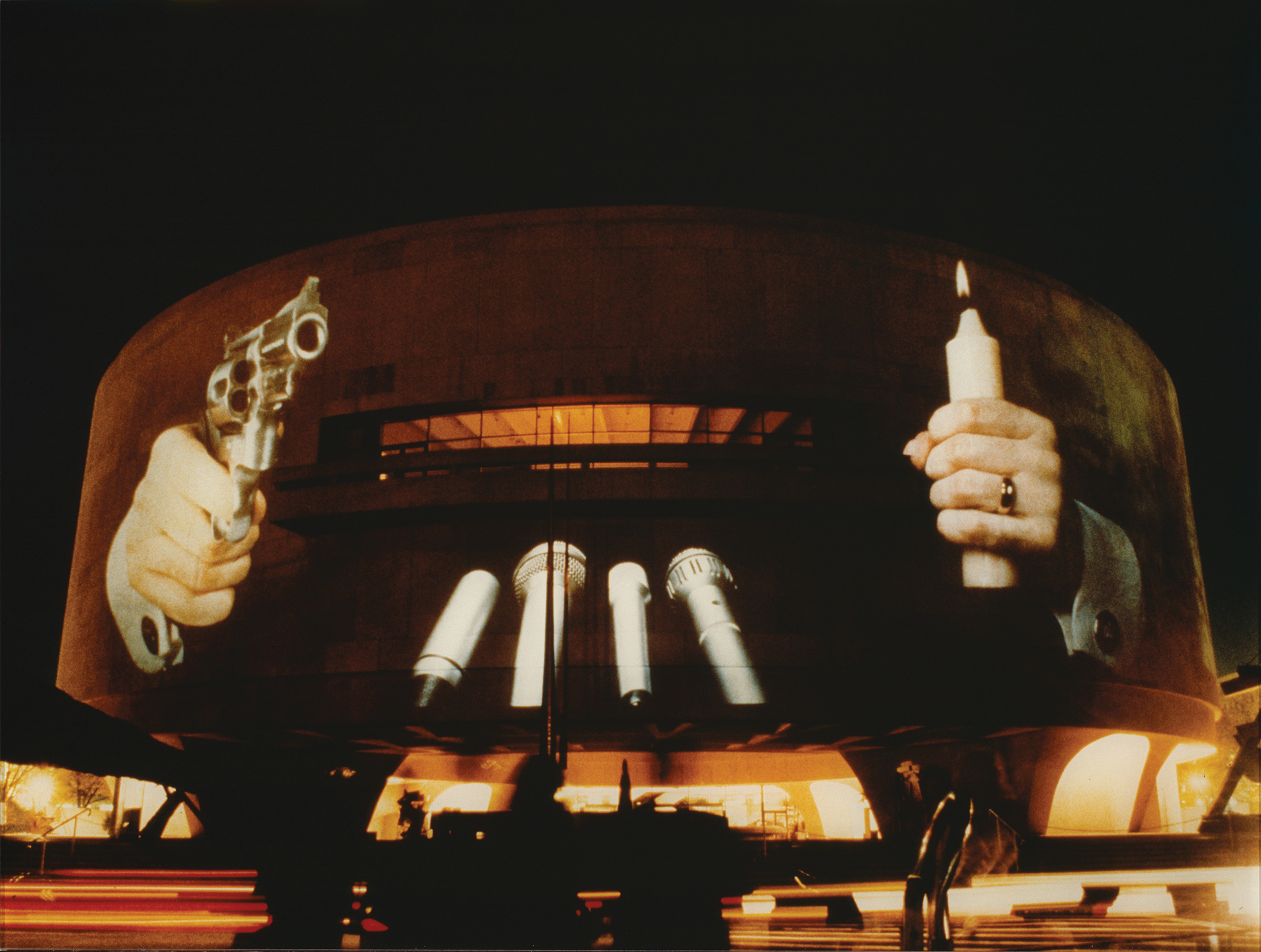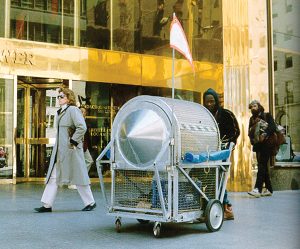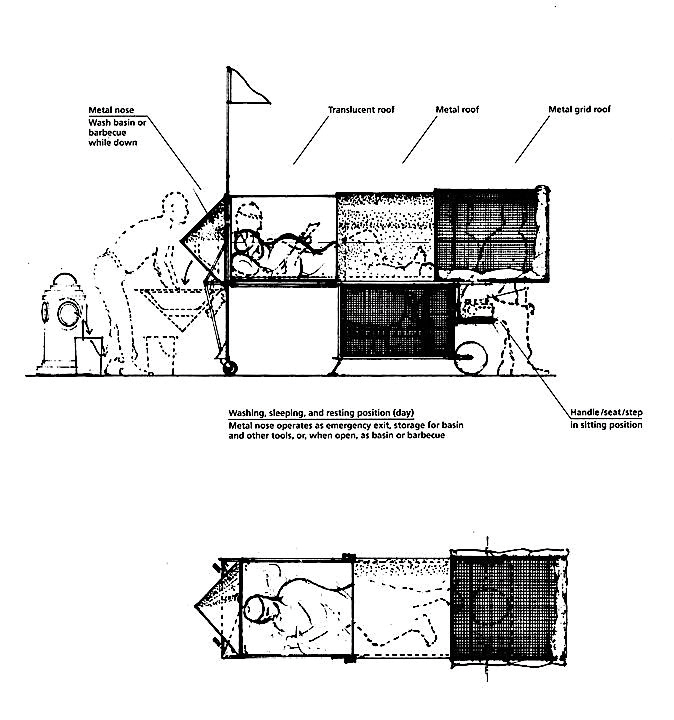- © 2025 Annapolis Home Magazine
- All Rights Reserved


Krzysztof Wodiczko’s Homeless Vehicle Project, 1988-89 (5th Avenue, New York)
Some years ago, when I taught as a visiting professor at the Massachusetts Institute of Technology, I had the great privilege of teaching with the deeply thoughtful artist Krzysztof Wodiczko. We would often meet weekly at a café to talk about our classes, art, and the world condition, of which he had strong views. It was during this time that I came to admire greatly how he used strategically assembled, visual imagery projected onto monuments to raise questions about society and power.
Wodiczko, who is from Poland, is now part of an exhibition at the Smithsonian’s Hirshhorn Museum and Sculpture Garden, titled “Brand New: Art and Commodity in the 1980s.” As part of the show, Wodiczko restaged his video projection on the museum’s three-story façade. First created in 1988, the projection took place during the final weeks of the presidential campaign in 1988. The cluster of microphones evokes a faceless press conference, with the gun a symbol of military power and violence, and the candles referring to George H.W. Bush’s “1000 Points of Light.” In looking back since the first projection 30 years ago, Wodiczko reflects, while clarifying the purpose of his art: “More than ever before, the meaning of our monuments depends on our active role in turning them into sites of memory and critical evaluation of history as well as places of public discourse and action.”

Krzysztof Wodiczko’s Homeless Vehicle Project, diagram, Sleeping, Washing, Sitting (day)
The exhibition also includes Wodiczko’s “Homeless Vehicle No. 5,” (1988-89), a mobile device designed as a political and social statement, as well as a model that would provide homeless people with shelter, storage and some form of autonomy.
While this is a group exhibition, Wodiczko’s work is a significant part of it. The Hirshhorn exhibition is open through May 13, 2018. For more information, visit hirshhorn.si.edu. To learn more about Wodiczko’ art and thought, see his book, Critical Vehicles: Writings, Projects, Interviews (1999).
Robert Haywood has a Ph.D. in art and architecture history from the University of Michigan, Ann Arbor. His book, Allan Kaprow and Claes Oldenburg: Art, Happenings and Cultural Politics, is out now from Yale University Press, London. To order, visit yalebooks.com.
Annapolis Home Magazine
Vol. 9, No. 2 2018